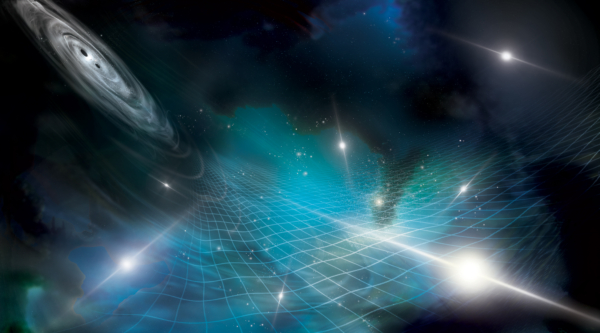Peering back in time, around 12 billion years, astronomers using the Atacama Large Millimeter/submillimeter Array (ALMA) have found the most distant and direct evidence of scorching gas in a forming galaxy cluster, SPT2349-56. The hot plasma, seen when the Universe was just 1.4 billion years old, is far hotter and more pressurized than current theories predicted for such an early system.
Recent News
Cosmic Lens Reveals Hyperactive Cradle of Future Galaxy Cluster
Astronomers using the U.S. National Science Foundation Very Large Array (NSF VLA) and the Atacama Large Millimeter/submillimeter Array (ALMA) have discovered a rare protocluster that was exceptionally bright, all when the Universe was 11 billion years younger. The system, called PJ0846+15 (J0846), is the first strongly lensed protocluster core discovered, revealing how some of the most massive galaxy clusters in the present-day Universe began their lives.
Stars That Die Off the Beaten Path
Astronomers have created a detailed forecast of where they expect to observe future stellar explosions in a nearby galaxy, opening a new window into how exploding stars shape the cosmos.
Scientists use Exotic Stars to Tune into Hum from Cosmic Symphony

Credit: A. Simonnet (NANOGrav)
For the last 15 years, the North American Nanohertz Observatory for Gravitational Waves (NANOGrav) Physics Frontiers Center has been using radio telescopes supported by the National Science Foundation— including those operated by NSF’s National Radio Astronomy Observatory— to turn a suite of millisecond pulsars into a galaxy-scale gravitational-wave detector. Millisecond pulsars are remnants of extinguished massive stars; as they spin hundreds of times each second, their “lighthouse-like” radio beams are seen as highly regular pulses. Gravitational waves stretch and squeeze space and time in a characteristic pattern, causing changes in the intervals between these pulses that are correlated across all the pulsars being observed. These correlated changes are the specific signal that NANOGrav has been working to detect.
NANOGrav’s most recent dataset offers compelling evidence for gravitational waves with oscillations of years to decades. These waves are thought to arise from orbiting pairs of the most massive black holes throughout the Universe: billions of times more massive than the Sun, with sizes larger than the distance between the Earth and the Sun. Future studies of this signal will enable us to view the gravitational-wave universe through a new window, providing insight into titanic black holes merging in the hearts of distant galaxies and potentially other exotic sources of low-frequency gravitational waves.
Read the full press release from NANOGrav.
A public event discussing the results will take place on Thursday, June 29, 2023 at 1pm Eastern Time on YouTube Live.
This news article was originally published on the NRAO website on June 28, 2023.
Recent News
New Discovery Challenges Evolution of Galaxy Clusters
Peering back in time, around 12 billion years, astronomers using the Atacama Large Millimeter/submillimeter Array (ALMA) have found the most distant and direct evidence of scorching gas in a forming galaxy cluster, SPT2349-56. The hot plasma, seen when the Universe was just 1.4 billion years old, is far hotter and more pressurized than current theories predicted for such an early system.
Cosmic Lens Reveals Hyperactive Cradle of Future Galaxy Cluster
Astronomers using the U.S. National Science Foundation Very Large Array (NSF VLA) and the Atacama Large Millimeter/submillimeter Array (ALMA) have discovered a rare protocluster that was exceptionally bright, all when the Universe was 11 billion years younger. The system, called PJ0846+15 (J0846), is the first strongly lensed protocluster core discovered, revealing how some of the most massive galaxy clusters in the present-day Universe began their lives.
Stars That Die Off the Beaten Path
Astronomers have created a detailed forecast of where they expect to observe future stellar explosions in a nearby galaxy, opening a new window into how exploding stars shape the cosmos.
